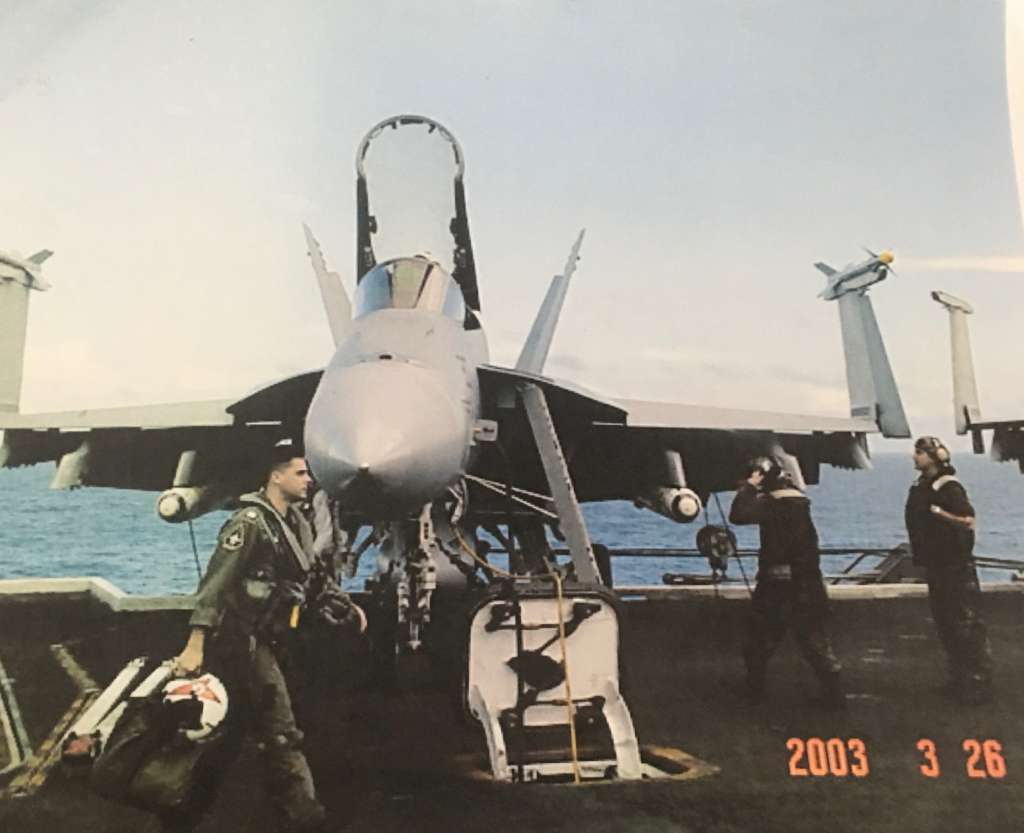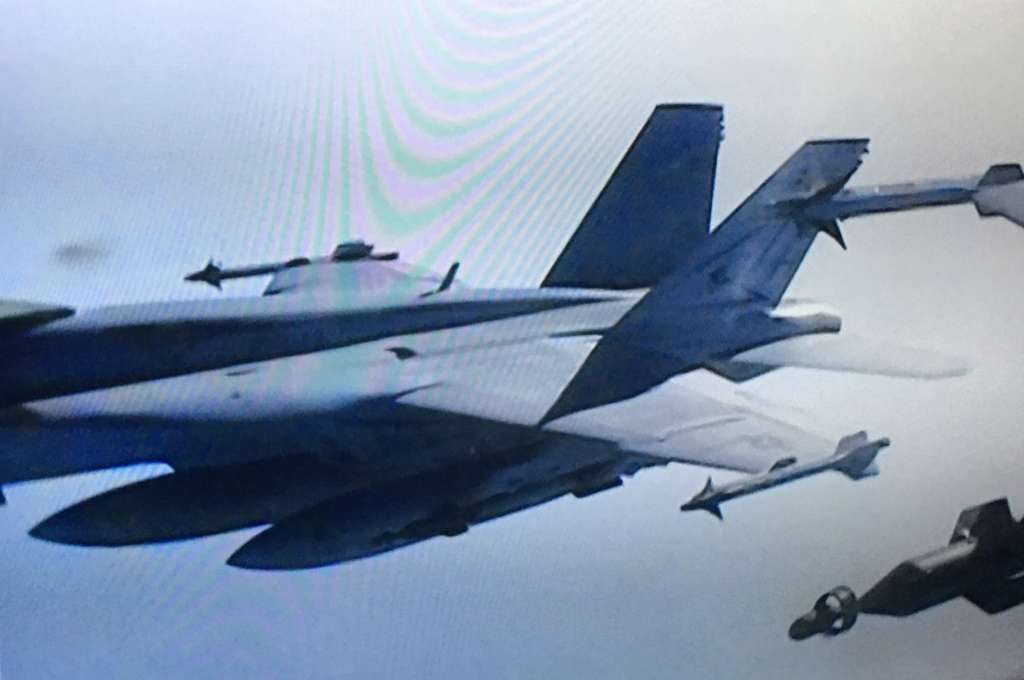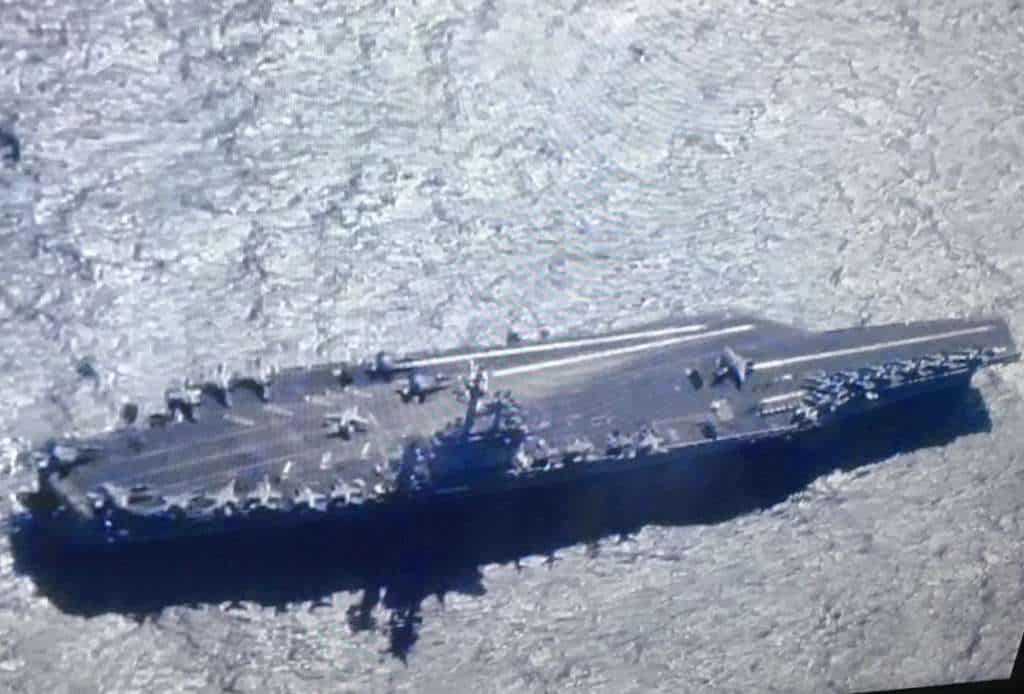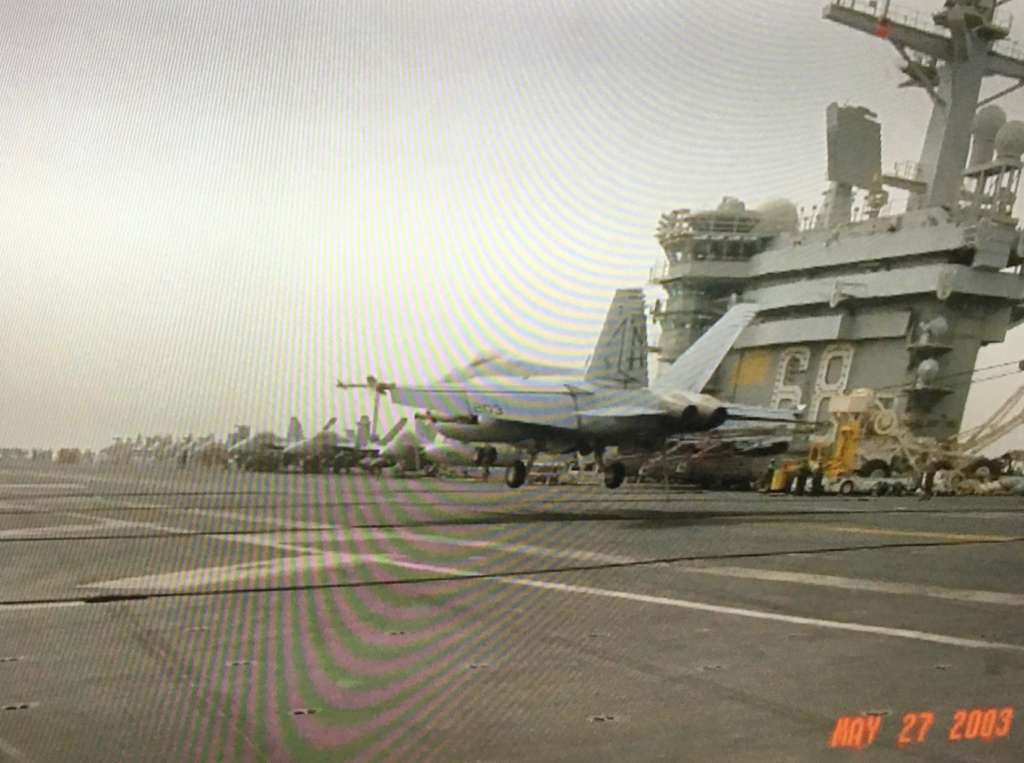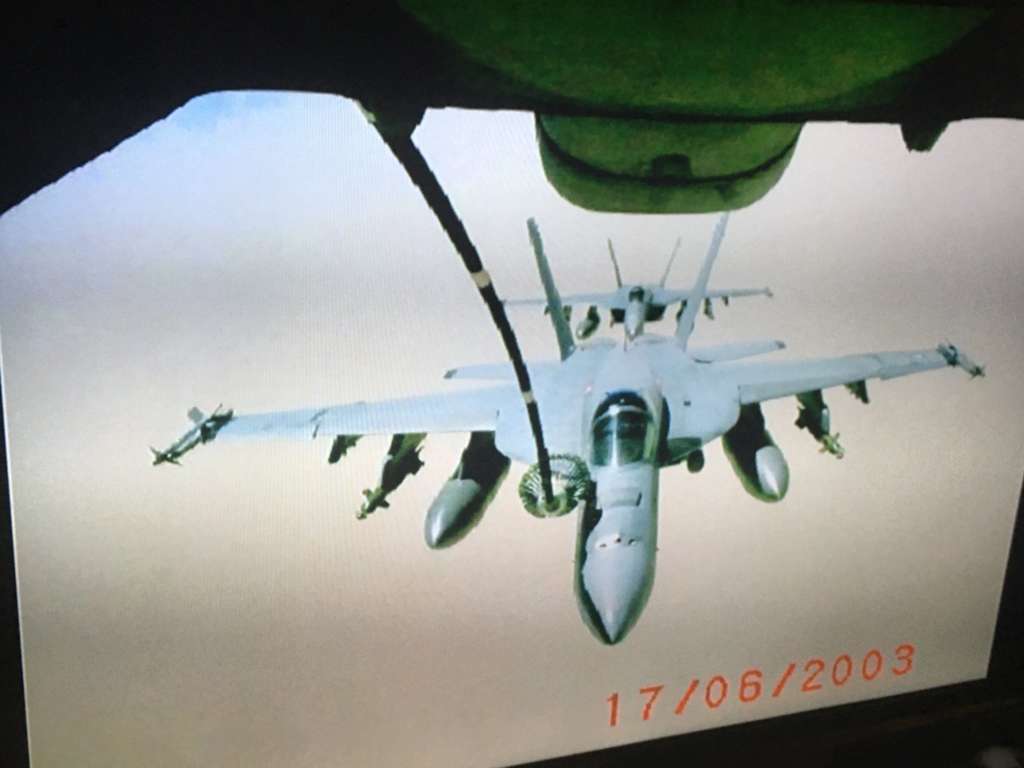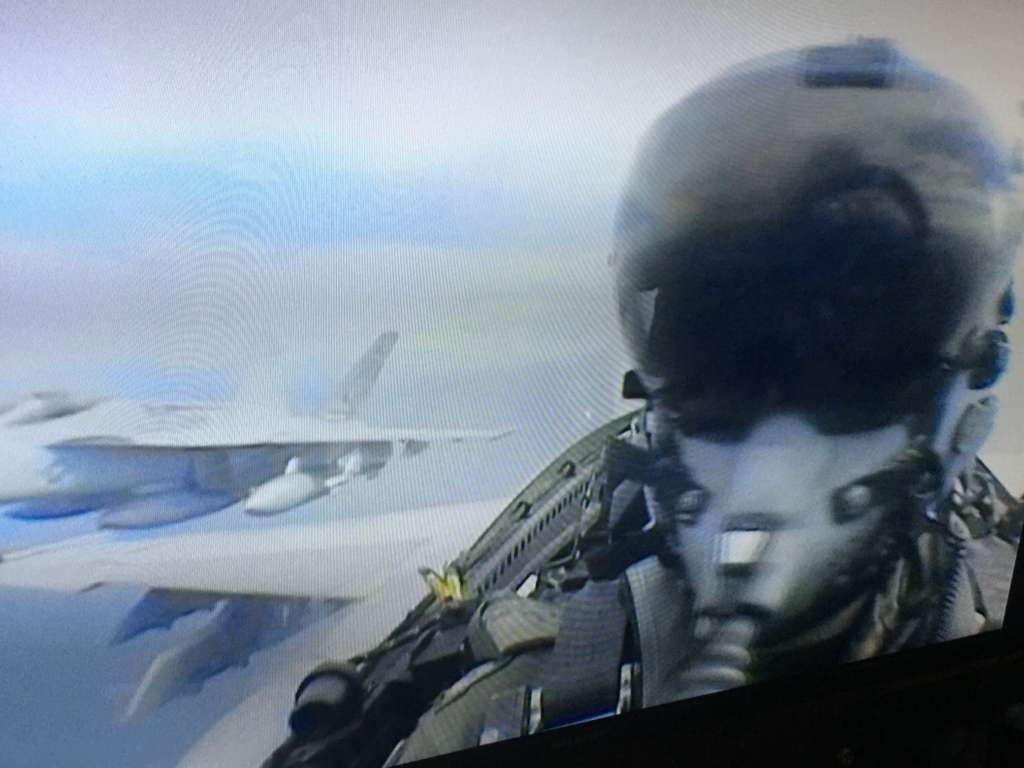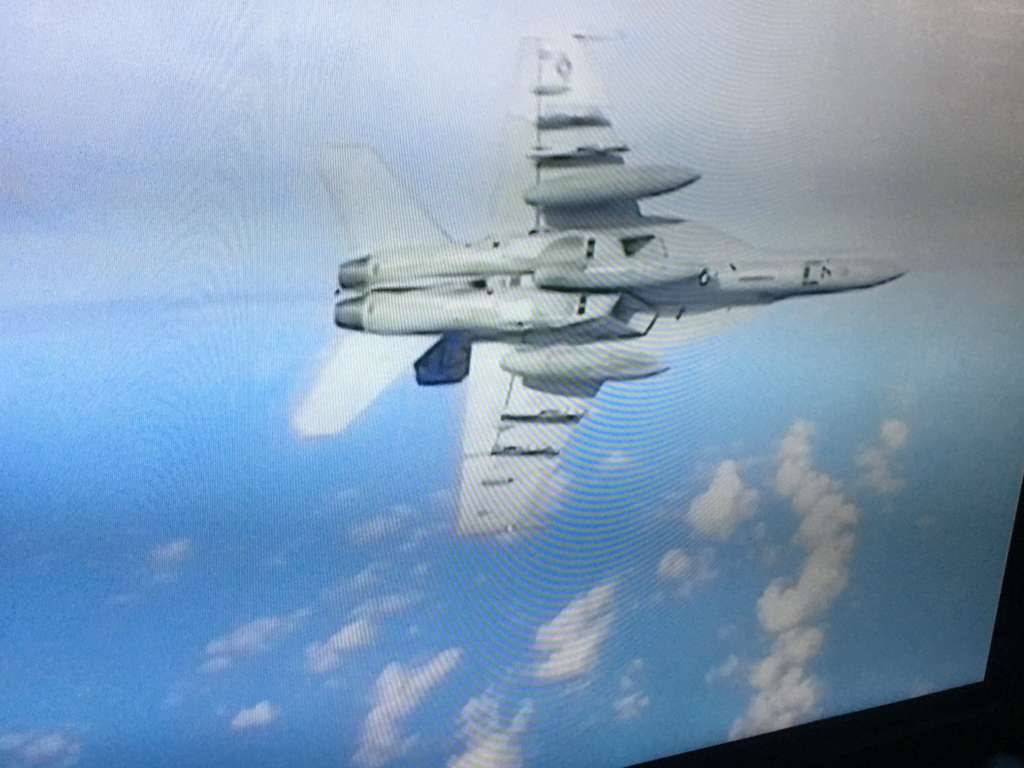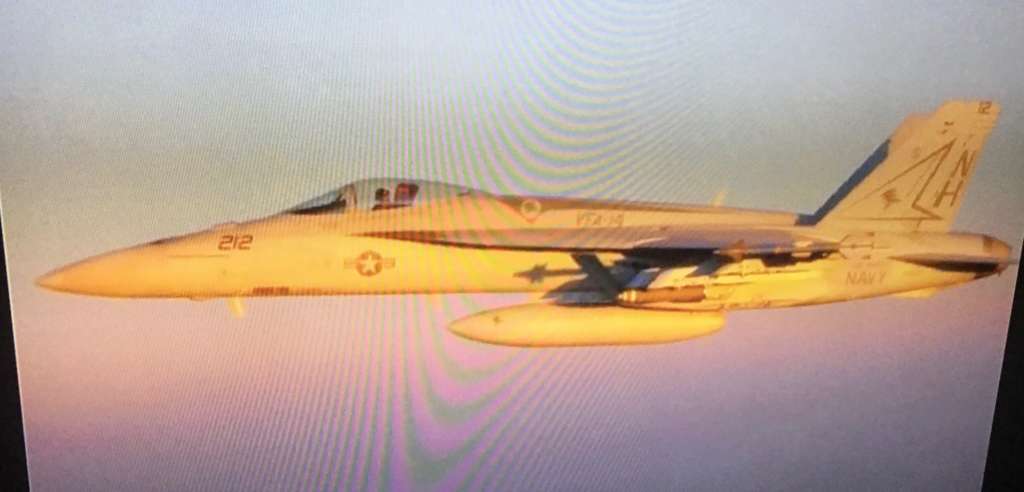By the time I arrived at Naval Air Station Lemoore in March of 2001, I was a qualified Naval Aviator. After 2 years and $3,000,000 of training, I knew how to fly tactical jets, I knew the fundamentals of being a good wingman and I knew how to land a plane on the boat.
The first 12 months of training in Lemoore was focused on making me a warrior wingman. I would not only learn how to fly the F/A-18E Super Hornet supersonic jet, but I would learn how to dogfight under high g-forces, use the 20 mm cannon firing 6,000 rounds per minute, deliver an array of bombs on target and land on the boat at night! I would learn where the edge of the envelope was, how to get there, and how to survive on that edge in a combat environment.
By September 2001, I was a lethal Wingman. I was able to fight my way into the target area as part of a team of 2-4 jets, shoot down enemy aircraft, deliver my ordnance against almost any target and fight my way out of the target area. After all of that, I would then fly back and land that $80 million piece of equipment on the flight deck of an aircraft carrier. If you needed a bomb delivered to the bad guys in an accurate and timely fashion in any weather, I was your guy.
On the morning of September 11, 2001, I was in the middle of a brief getting ready to go fly what was going to be just another training mission. An instructor came in and said, “Hey guys, knock off the brief. Come outside.” And when we walked out of the ready room, we saw what was unfolding real-time in New York City. From that moment, my training took on a new reality. Like every American on that fateful morning, I watched in disbelief as terrorists hijacked our airliners and evil hijacked our way of life. But unlike most Americans, I realized that I would be going to war…and soon.
After finishing my training in Lemoore, I reported to SERE (Survival, Evasion, Resistance and Escape) School for what was the most intense training I have ever experienced. For 2 weeks, along with about 30 classmates of all ranks, I learned how to survive in the wild and in a POW camp. It was meant to prepare us for the worst-case scenario of being shot down behind enemy lines. SERE takes you to the edge of your mental and physical limits, but the training was invaluable.
I finally reported to my first Fleet squadron, the VFA-14 TopHatters (the world’s oldest squadron), in 2002. We deployed aboard the USS Nimitz in early 2003 and arrived in theatre in April of 2003. For the first seven months of the war, we conducted combat missions over Iraq from the Persian Gulf, providing close air support to protect the young Marines and soldiers on the ground whose job it was to march into Baghdad, Fallujah and Tikrit.
It was the experience of a lifetime to not only fly jets off an aircraft carrier, but to do so in combat with the mission of making sure that those young Marines and soldiers on the ground who were doing the hard job came home. To know that we were saving American lives on the ground on a daily basis was truly rewarding.
I ended up flying over 30 combat missions over the skies of Iraq. The average mission was anywhere from six to eight and a half hours, which is a long time for a single-seat pilot. You fly a couple of hours to get into the country and then you orbit overhead, get refueled and topped off from the airborne tankers. Then you’re overhead for about 45 minutes, typically waiting for Marine or Army units to request any kind of support.
Then you’d fly home for an hour and a half, but in the back of your mind you always know you have go back to the big gray beast that’s floating out in the middle of the ocean. Landing on an aircraft carrier, whether it’s daytime or nighttime, is never an easy thing, and it’s something you don’t ever take for granted.
For a kid from Saugus to be sent to the other side of the world to employ such an amazing machine in the interest of national defense was a huge honor for me, and to come home alive after serving with honor and integrity was a real blessing. Over the course of the next six years, I would serve as an instructor pilot in Lemoore and spend several more months at sea, including another major deployment to east Asia.
The deployment in 2003 to Iraq and the 30+ combat missions was the pinnacle of a dream career. I had done everything as a young strike fighter pilot that I had wanted to since I was a kid, but when my eldest son Preston was born in October of 2006, I knew the purpose of my life was changing. While flying for the Navy and serving my country overseas in combat was a dream come true, I had a new calling…this time as a daddy.
In June of 2009, I separated from active duty (I continued in the Navy reserves as an instructor pilot until 2012) and moved back to Santa Clarita to focus on my family and my community.

